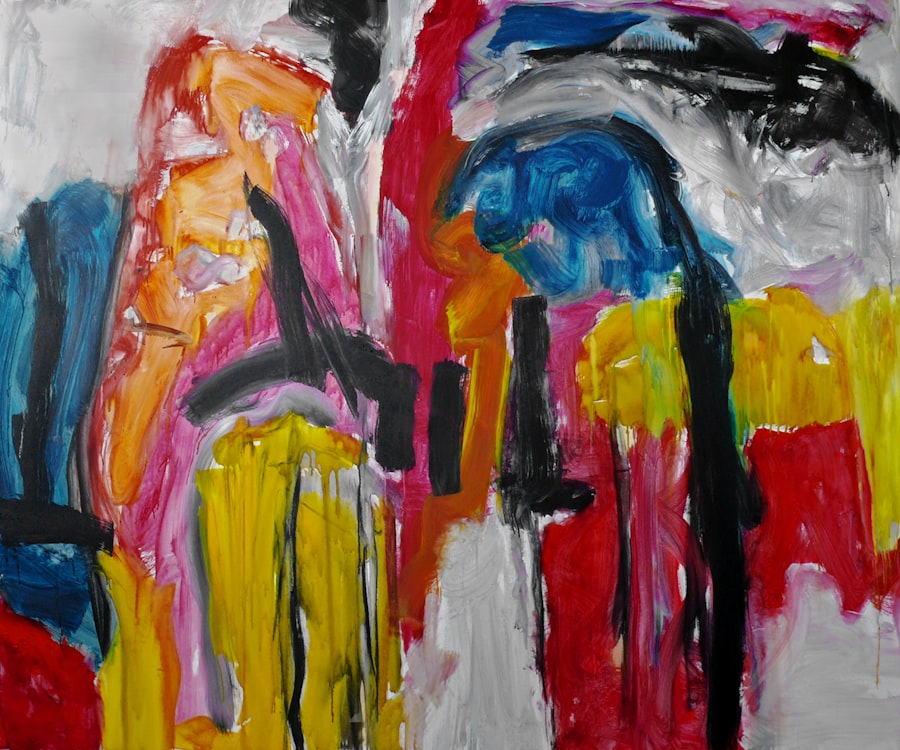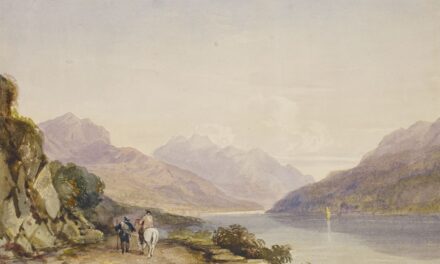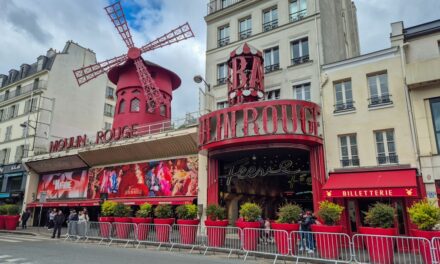Mark Rothko, born Marcus Yakovlevich Rothkowitz, was born on 25 September 1903 in Dvinsk, Russia (now Daugavpils, Latvia). His family emigrated to the United States in 1913, settling in Portland, Oregon. Rothko attended Yale University, where he studied liberal arts and took courses in psychology, philosophy, and art history.
After leaving Yale, he moved to New York City to pursue a career in art. In the 1920s, he studied at the Art Students League under the tutelage of Max Weber, a Russian-born American painter known for his Cubist-inspired works. Rothko’s early works were influenced by European modernism and Surrealism, but he subsequently developed his own unique style that would come to define his artistic legacy.
Rothko’s early life and education significantly influenced his artistic development. His experiences as an immigrant and his exposure to diverse cultural influences shaped his worldview and artistic sensibilities. His studies in psychology and philosophy also had a profound impact on his work, leading him to explore themes of the human condition, spirituality, and the subconscious mind in his art.
These formative years established the foundation for Rothko’s later artistic explorations and the development of his signature style.
Summary
- Mark Rothko was born in Russia and immigrated to the United States as a child, where he later studied at Yale University.
- Rothko was influenced by a variety of artistic styles, including surrealism and expressionism, and is known for his large, abstract paintings with intense colours and emotional depth.
- The Rothko Chapel in Houston, Texas, is a sacred space featuring 14 of Rothko’s paintings, designed to inspire contemplation and reflection.
- The Rothko Room at the Tate Modern in London houses a collection of Rothko’s works, providing visitors with a unique and immersive experience of his art.
- Rothko’s legacy includes the establishment of the Rothko Foundation, which supports art education and the preservation of his work, while his art continues to spark debate and controversy in the art world.
Artistic Influences and Style
Early Inspirations
He was also influenced by the Surrealist movement, particularly the works of Joan Miró and Salvador Dalí, which led him to explore themes of the subconscious and the irrational in his art.
The German Expressionist Connection
However, it was his encounter with the work of the German Expressionists, particularly Emil Nolde and Wassily Kandinsky, that had the most profound impact on Rothko’s artistic development. Rothko’s style evolved over time, culminating in his signature technique of painting large-scale canvases with blocks of colour.
A Unique Artistic Vision
He abandoned representational imagery in favour of abstract forms that conveyed deep emotional and spiritual content. His use of colour was central to his artistic vision, with hues and tones carefully chosen to evoke specific emotional responses in the viewer. Rothko’s paintings are often characterised by their luminous, ethereal quality, with layers of colour creating a sense of depth and intensity. His work is often associated with the Abstract Expressionist movement, although Rothko himself resisted categorisation and preferred to be seen as a unique voice in the art world.
The Rothko Chapel

The Rothko Chapel, located in Houston, Texas, is one of Mark Rothko’s most significant artistic achievements. Commissioned by John and Dominique de Menil, the chapel was designed as a place for people of all faiths to gather and meditate. The building itself was designed by architects Philip Johnson and Howard Barnstone, with Rothko creating a series of 14 monumental canvases specifically for the space.
The paintings were installed in 1971, just a year before Rothko’s death. The Rothko Chapel is a powerful testament to Rothko’s ability to create immersive and contemplative environments through his art. The paintings, which feature dark, brooding colours and simple geometric forms, create a sense of solemnity and introspection within the chapel’s octagonal walls.
Visitors are encouraged to sit quietly and contemplate the works, allowing for a deeply personal and spiritual experience. The Rothko Chapel has become a site of pilgrimage for art lovers and spiritual seekers alike, cementing Rothko’s legacy as an artist who transcended traditional boundaries and sought to create art that spoke to the human soul.
The Rothko Room at the Tate Modern
The Rothko Room at the Tate Modern in London is another important site dedicated to Mark Rothko’s work. The room houses a series of nine large-scale paintings created by Rothko in the late 1950s. The paintings were originally commissioned for the Four Seasons Restaurant in New York City but were ultimately deemed unsuitable for the space due to their sombre and contemplative nature.
They were later acquired by the Tate Modern and installed in a specially designed room that allows visitors to experience the works in an intimate and immersive setting. The Rothko Room at the Tate Modern offers a unique opportunity to engage with Rothko’s art in a carefully curated environment. The paintings, which feature Rothko’s characteristic use of colour and form, create a sense of profound emotional depth and intensity.
Visitors are encouraged to spend time with each painting, allowing for a deeply personal and immersive experience. The room has become a popular destination for art enthusiasts seeking to connect with Rothko’s work on a visceral level, further solidifying his status as a pioneering figure in the world of abstract art.
Legacy and Impact
Mark Rothko’s legacy as an artist is far-reaching and enduring. His contributions to the development of abstract art have had a profound impact on subsequent generations of artists. His exploration of colour, form, and emotion continues to inspire contemporary artists working in a wide range of mediums.
Rothko’s ability to create immersive and contemplative environments through his art has also left a lasting impression on the art world, with many artists seeking to emulate his ability to evoke deep emotional responses in viewers. Rothko’s influence extends beyond the realm of visual art, with his work inspiring musicians, writers, and filmmakers alike. His paintings have been used as cover art for albums by musicians such as David Bowie and Red Hot Chili Peppers, while his impact on literature can be seen in the writings of authors such as Don DeLillo and Haruki Murakami.
Filmmakers such as Stanley Kubrick have also cited Rothko as an influence on their work, demonstrating the far-reaching impact of his artistic vision.
The Rothko Foundation

Preserving Rothko’s Legacy
The foundation also oversees the management of the artist’s estate and works closely with museums and galleries around the world to ensure that Rothko’s legacy is preserved for future generations.
Promoting Scholarship and Appreciation
The Rothko Foundation has played a crucial role in promoting scholarship on Rothko’s work and ensuring that his artistic contributions are properly documented and celebrated. Through its various initiatives, the foundation has sought to engage audiences with Rothko’s art on a deeper level, fostering a greater appreciation for his unique vision and artistic achievements.
Solidifying Rothko’s Place in Art History
The foundation’s ongoing efforts have helped to solidify Rothko’s place in art history as a pioneering figure whose impact continues to resonate with audiences around the world.
Controversies and Criticisms
Despite his enduring legacy, Mark Rothko’s work has not been without controversy and criticism. Some art critics have dismissed his paintings as overly simplistic or lacking in technical skill, while others have questioned the validity of abstract art as a whole. Additionally, there have been debates surrounding the commercialisation of Rothko’s work, with some arguing that his paintings have become commodified objects rather than meaningful works of art.
Rothko himself was known to be highly sensitive to criticism, often feeling misunderstood or underappreciated by the art world. His struggles with depression and anxiety were reflected in his later works, which became increasingly dark and introspective. However, it is precisely this emotional depth and intensity that has resonated with so many viewers over the years.
While controversies surrounding his work continue to exist, there is no denying the profound impact that Rothko has had on the world of art and culture at large.
If you are interested in learning more about the art movements that influenced Mark Rothko’s work, you should check out the article on Post-Impressionism on Thinkofart.com. Post-Impressionism was a movement that emerged in the late 19th century and had a significant impact on the development of modern art. Artists like Vincent van Gogh and Paul Cézanne, who were associated with this movement, explored new ways of representing the world through their use of colour and form. Rothko’s use of colour and his interest in creating emotional and spiritual experiences through his art can be seen as a continuation of the ideas explored by Post-Impressionist artists. You can read more about Post-Impressionism and its influence on Rothko’s work here.
FAQs
Who was Mark Rothko?
Mark Rothko was an American abstract artist known for his large, color field paintings. He was born in Latvia in 1903 and emigrated to the United States with his family in 1913.
What is Mark Rothko known for?
Mark Rothko is known for his unique style of abstract expressionism, characterized by large, rectangular fields of color that evoke emotional and spiritual responses from the viewer.
What influenced Mark Rothko’s art?
Rothko’s art was influenced by a variety of sources, including mythology, philosophy, and psychology. He was also influenced by the work of other artists such as the surrealist painter Joan Miró and the abstract expressionist Clyfford Still.
What are some famous works by Mark Rothko?
Some of Mark Rothko’s most famous works include the “Rothko Chapel” in Houston, Texas, and the series of large-scale paintings known as the “Rothko Seagram Murals.”
What is the significance of Mark Rothko’s art?
Mark Rothko’s art is significant for its exploration of the emotional and spiritual power of color and form. His work has had a lasting impact on the development of abstract art and continues to be influential to artists and art lovers around the world.




